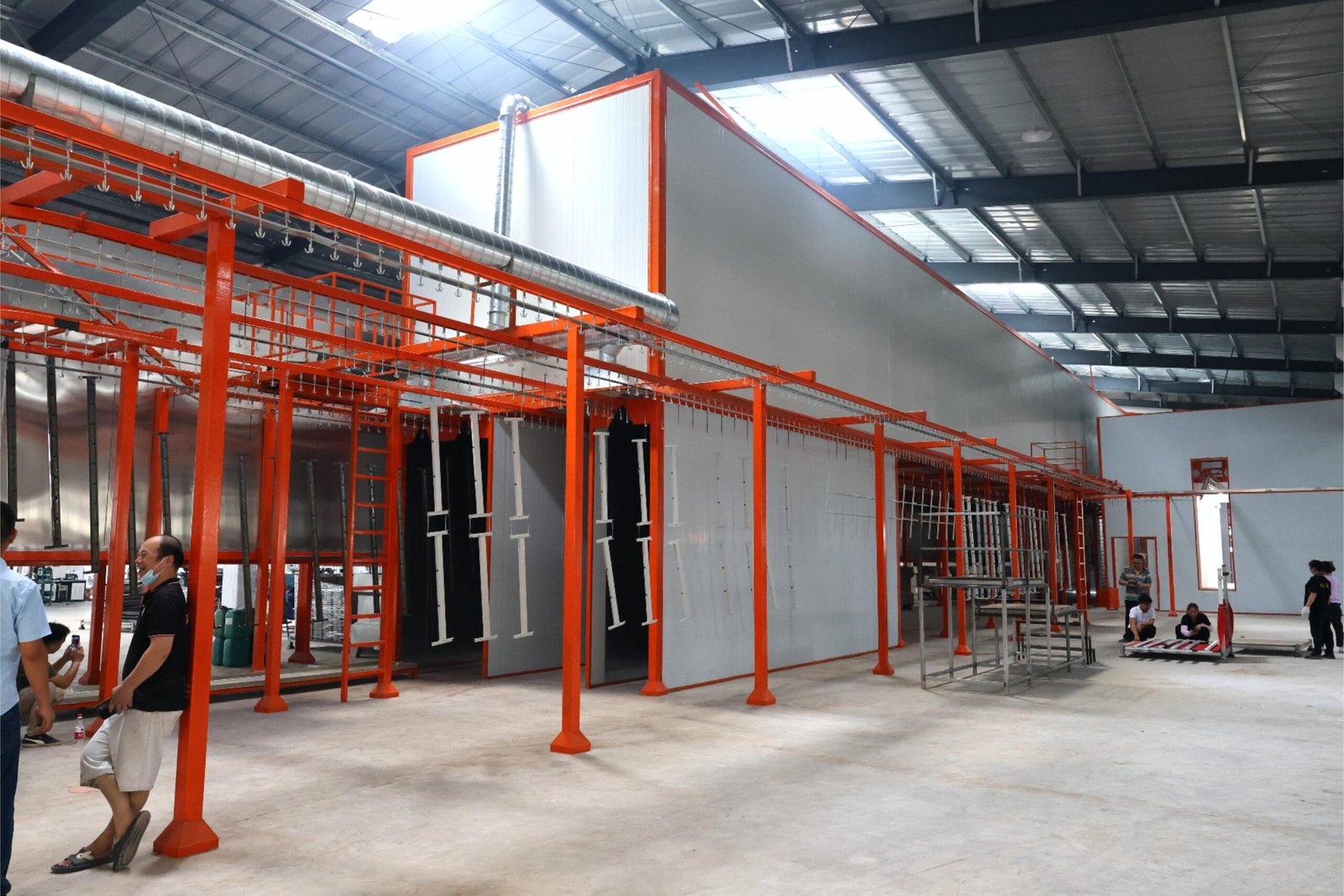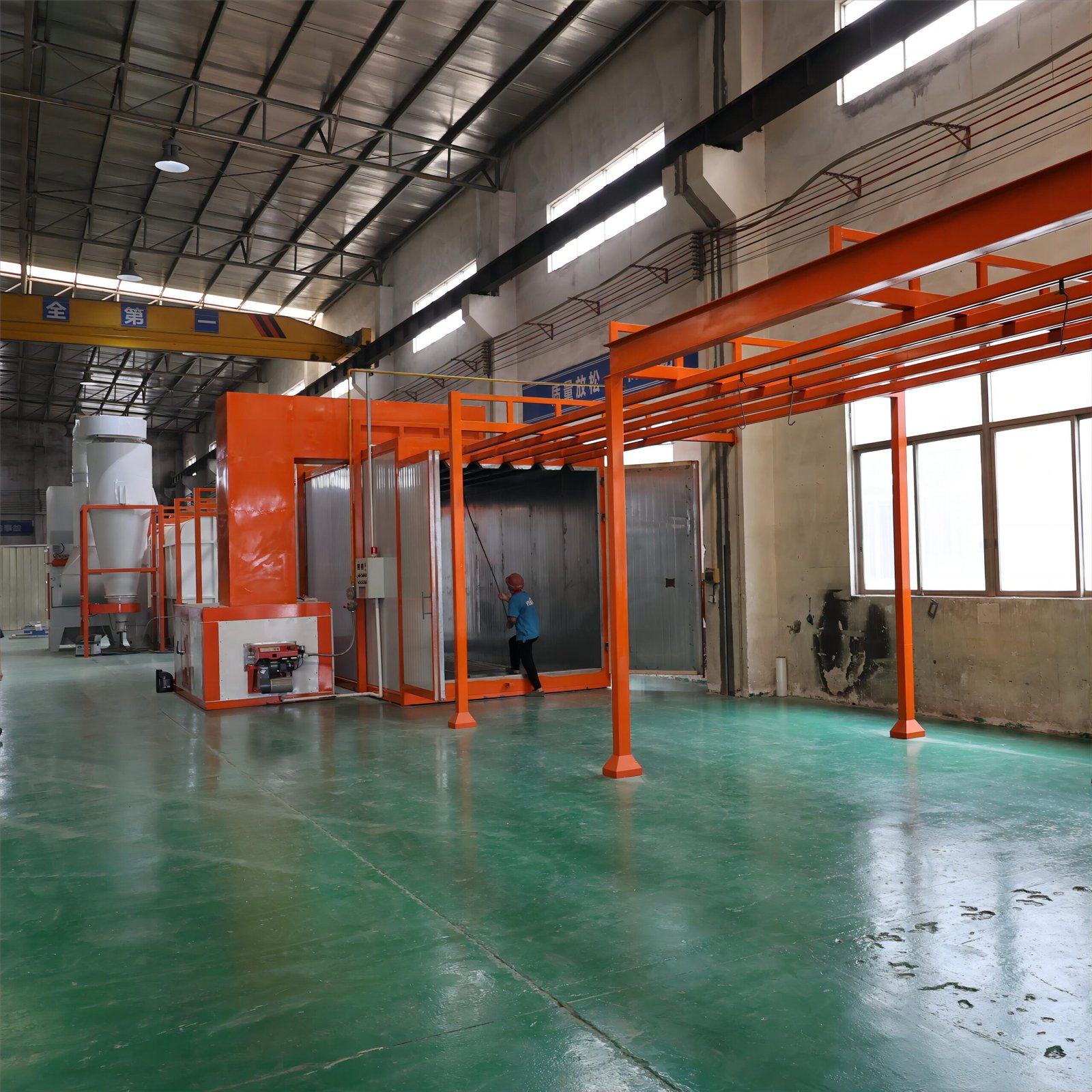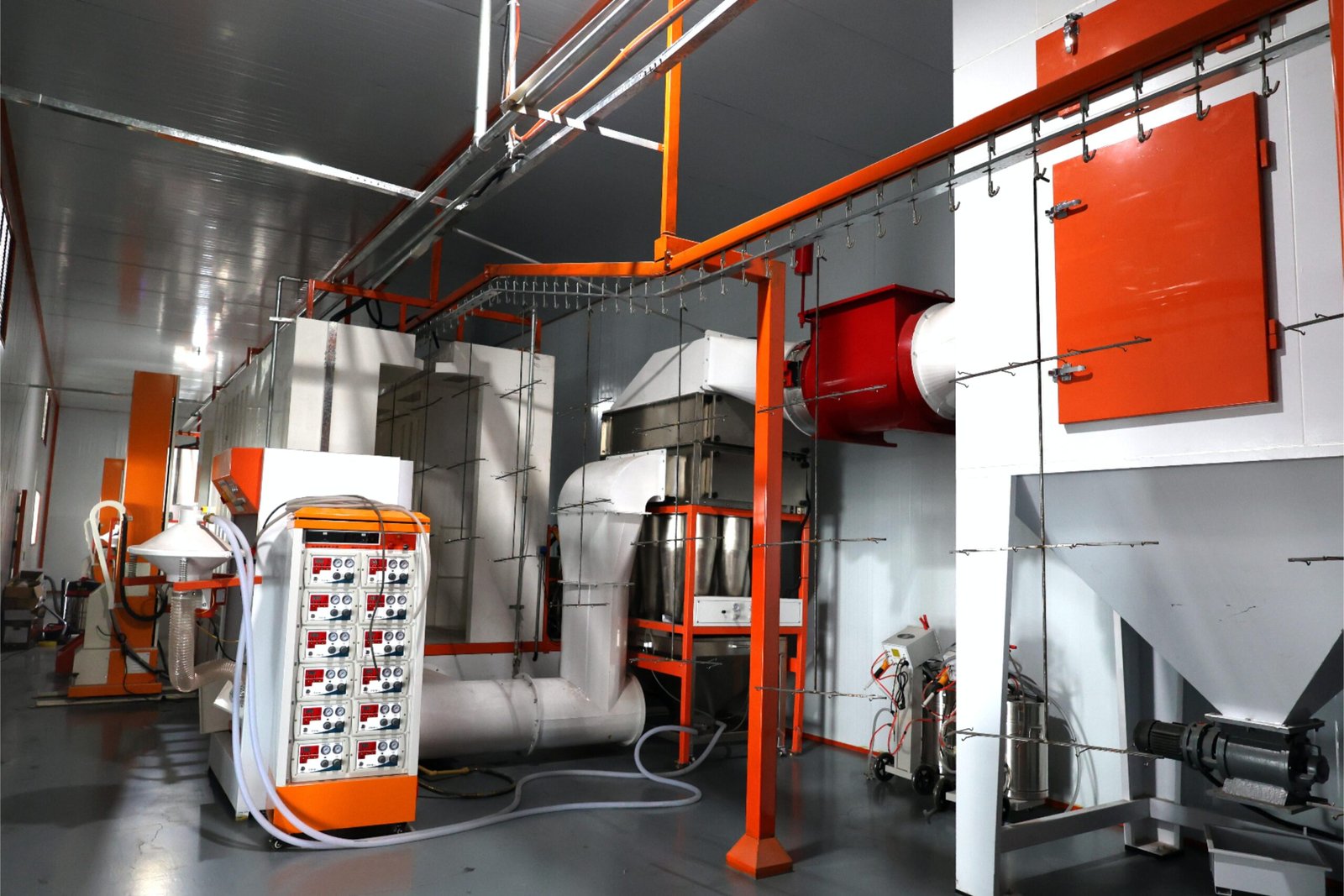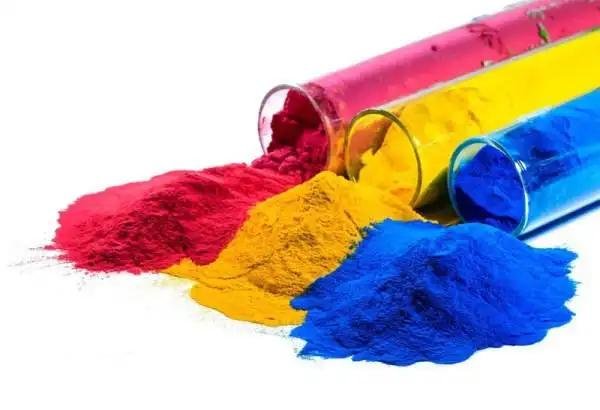Powder coating is a widely used finishing process known for its durability, environmental friendliness, and superior aesthetic qualities. However, like any manufacturing process, it can present various challenges that affect the quality and efficiency of the coating. At Ketu, we specialize in providing advanced Powder coating line systems designed to minimize these issues and optimize your finishing operations. This comprehensive article explores common powder coating problems, their causes, and practical solutions to help fabricators achieve flawless finishes.

Introduction to Powder Coating Challenges
Despite its advantages, powder coating can suffer from a range of problems during application and curing. These issues may stem from equipment malfunctions, improper process parameters, environmental factors, or material incompatibilities. Recognizing and addressing these problems promptly is essential to maintaining product quality and reducing waste.
Ketu’s Powder coating line solutions incorporate advanced technology and expert support to help fabricators troubleshoot and prevent common defects. Below, we detail frequent powder coating problems and actionable remedies.
Common Powder Coating Problems and Their Solutions
1. Poor Fluidization of Powder
Problem: Powder does not flow smoothly from the fluidizing container, causing uneven application and inconsistent powder clouds.
Causes:
- Incorrect fluidizing air pressure (too high or too low)
- Defective or clogged fluidizing plates
- Oil contamination in compressed air
- Excessively fine or reclaimed powder
- Inappropriate powder temperature or humidity
Solutions:
- Adjust fluidizing air pressure to manufacturer specifications
- Clean or replace fluidizing plates regularly
- Install and maintain air filters to remove oil and moisture
- Use a proper mix of virgin and reclaimed powder
- Store powder in recommended conditions to avoid clumping

2. Clogging of Powder Feed Hoses
Problem: Deposits form inside powder feed hoses, causing sporadic powder bursts that create surface defects after curing.
Causes:
- Incorrect feed air pressure
- Moisture or oil in delivery air
- Improper hose routing causing kinks
- Worn or inappropriate hose materials
- Excessively long or narrow hoses
Solutions:
- Optimize feed air pressure for smooth powder flow
- Use moisture traps and oil filters in air supply
- Re-route hoses to avoid bends and kinks
- Replace hoses with suitable materials like silicone or Teflon
- Shorten hoses and select appropriate diameters
3. Powder Does Not Adhere to Substrate
Problem: Powder coating falls off the parts, resulting in insufficient film thickness.
Causes:
- Poor grounding of parts or hooks
- Low or no electrostatic voltage
- Excessive powder flow causing blast-off
- Unsuitable particle size distribution
- Improper part geometry or hanging position
- Insufficient pretreatment or surface contamination
Solutions:
- Test and improve grounding connections (<1 MΩ resistance)
- Verify and adjust gun voltage and powder flow
- Use correct powder particle size and mix virgin powder as needed
- Modify part hanging or geometry if possible
- Ensure thorough pretreatment and clean surfaces before coating

4. Poor Wrapping and Coverage
Problem: One-sided gun positioning leads to minimal film thickness on the opposite side of parts.
Causes:
- Incorrect powder flow or air speed
- Insufficient grounding or dirty hooks
- Part temperature too high after drying
- Improper gun distance or voltage settings
- Unsuitable particle size distribution
Solutions:
- Adjust powder flow and supplemental air speed
- Clean hooks and verify grounding
- Allow parts to cool below 40°C before coating
- Optimize gun distance and voltage for part geometry
- Consult powder manufacturer for proper particle size

5. Powder Lumping in Hopper
Problem: Coal-shaped lumps form in the powder hopper, disrupting powder flow.
Causes:
- Improper storage temperature or humidity
- Exceeding powder shelf life
- Continuous vibration of hopper causing compaction
- Transport temperature too high
Solutions:
- Store powder in controlled environment (<25°C, dry)
- Use fresh powder and strain before use
- Avoid continuous vibration during feeding
- Consult powder supplier for best storage practices

6. Poor Penetration into Recesses
Problem: Insufficient coating thickness in corners and recessed areas due to Faraday cage effect.
Causes:
- Excessive supplemental or tribo air pressure
- Incorrect air speed or powder flow
- Unsuitable nozzle type or worn equipment
- Insufficient electrostatic charging or grounding
- Improper gun distance or particle size
Solutions:
- Adjust air pressures and powder flow to optimize penetration
- Use flat spray nozzles or deflectors for better coverage
- Increase gun voltage and verify grounding
- Reduce gun-to-part distance appropriately
- Optimize particle size distribution with powder supplier
7. Film Thickness Too High
Problem: Uneven surface before curing, orange peel texture, wavy flow, or pinholes after curing.
Causes:
- Overheated parts from dry-off oven
- Excessive powder flow or coating time
- High preheat temperature
Solutions:
- Allow parts to cool below 40°C before coating
- Reduce powder feed rate and coating time
- Lower preheat temperature or increase cooling time

8. Powder Puffs on Work Pieces
Problem: Visible powder clusters or "puffs" appear as elevations on the cured surface.
Causes:
- Poor fluidization or uneven powder transport
- Long or oversized powder feed hoses
- Worn venturi nozzles or catch nozzles
- Moist or contaminated powder
- Inconsistent air pressure in powder supply
Solutions:
- Maintain proper fluidization and air pressure
- Shorten and optimize hose diameter
- Replace worn nozzles promptly
- Use dry, properly stored powder
- Monitor and stabilize air pressure
9. Craters or Pinholes
Problem: Small blank spots or holes exposing the substrate.
Causes:
- Oil, grease, or chemical residues on surface
- Rust or white rust on parts
- Oil contamination in feed or atomizing air
- Silicone contamination from lubricants or sprays
- Outgassing from substrates during curing
Solutions:
- Ensure thorough pretreatment and cleaning of parts
- Remove rust and apply proper surface treatments
- Use filtered, oil-free compressed air
- Avoid silicone-containing products near coating line
- Preheat parts above cure temperature to release trapped gases

10. Poor Adhesion
Problem: Coating peels or flakes off after curing.
Causes:
- Under- or over-curing of powder film
- Inadequate or improper pretreatment
- Surface rust or oxide layers on parts
- Use of incompatible powders or substrates
Solutions:
- Follow precise curing parameters for powder type
- Optimize pretreatment processes for substrate
- Store parts in dry conditions and remove rust mechanically
- Use compatible powder coatings recommended by supplier

Additional Common Defects and Remedies
- Weld Splatter: Grind or sand weld spatter before coating.
- Outgassing: Preheat cast or galvanized parts above cure temperature.
- Laser Cutting Residue: Remove carbon deposits by grinding or abrasive blasting.
- Blooming (White Film): Increase curing temperature and improve oven air circulation.
- Discoloration: Use powders compatible with substrate and curing conditions.
Powder Coating Problems and Solutions Table
| Problem | Possible Causes | Solutions |
|---|---|---|
| Poor Fluidization | Incorrect air pressure, clogged plates, oil | Adjust air pressure, clean plates, filter air |
| Clogging of Feed Hoses | Moisture, oil, hose kinks, wrong hose type | Use moisture traps, reroute hoses, replace hoses |
| Powder Does Not Adhere | Poor grounding, low voltage, excess powder | Improve grounding, adjust voltage and flow |
| Poor Wrapping | One-sided guns, high part temperature | Adjust gun position, cool parts, optimize flow |
| Powder Lumping | Improper storage, vibration, temperature | Store properly, strain powder, avoid vibration |
| Poor Penetration | High air pressure, worn nozzles, poor grounding | Adjust air pressure, replace nozzles, check grounding |
| Film Thickness Too High | Overheated parts, high powder flow | Cool parts, reduce powder feed |
| Powder Puffs | Poor fluidization, long hoses, moist powder | Optimize fluidization, shorten hoses, dry powder |
| Craters/Pinholes | Surface contamination, oil in air, outgassing | Clean surfaces, filter air, preheat parts |
| Poor Adhesion | Incorrect curing, poor pretreatment | Follow curing specs, improve pretreatment |
Conclusion
Powder coating is a sophisticated process that can encounter various challenges affecting finish quality. Understanding these common problems and their solutions is essential for fabricators to maintain high standards and operational efficiency. Ketu’s advanced Powder coating line systems are engineered to address these issues through precise control, reliable equipment, and expert support.
Fabricators seeking to overcome powder coating challenges and improve their finishing results can rely on Ketu’s innovative Powder coating line solutions tailored to their unique production needs.
For more information, visit Ketu’s official website and explore our comprehensive powder coating line technologies.


